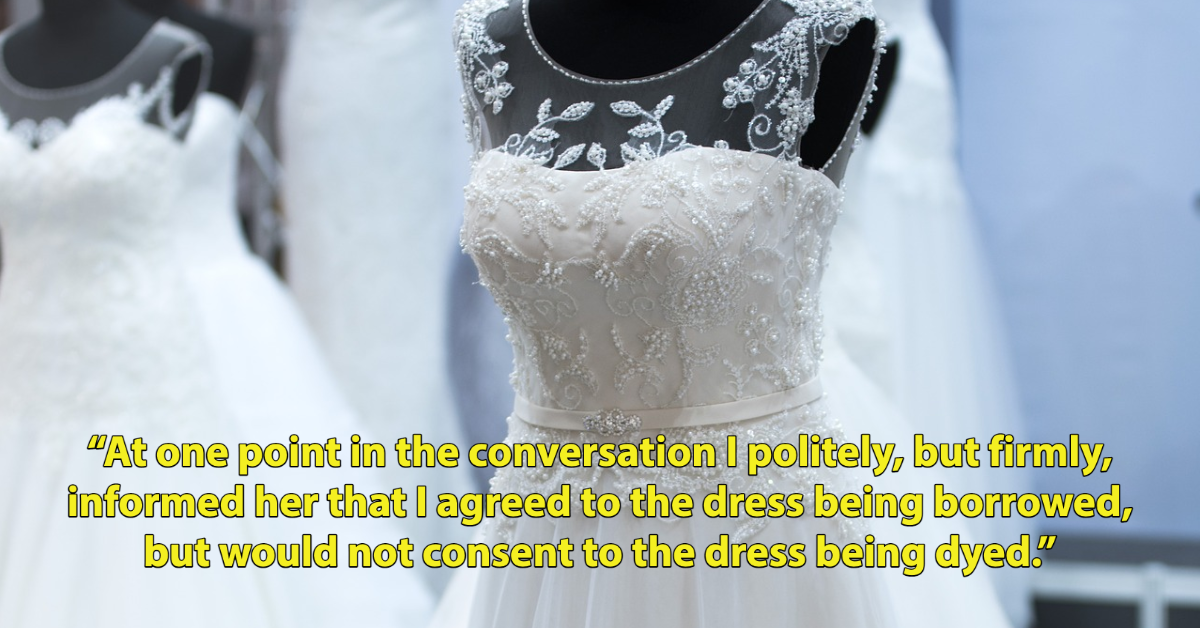Transforming a wedding dress from a classic ivory or white to a vibrant hue can be an exhilarating endeavor. Imagine wearing a dress that reflects your personality, a garment that embodies your identity and creativity. It’s not just about aesthetic appeal; it’s about making a statement. However, embarking on this journey requires careful planning and consideration to ensure that your beloved attire doesn’t suffer in the process. Here’s a comprehensive guide on how to successfully dye a wedding dress without ruining it.
1. Understand the Fabric
The first step in your dyeing adventure is to comprehend the fabric of your wedding dress. Different materials react distinctly to dye. For instance, silk and cotton are more amenable to dyeing, yielding vibrant results. Conversely, synthetic fibers, like polyester and nylon, may resist dye, resulting in uneven coloration. Check the garment tag or consult a fabric guide to establish the dress’s composite. Understanding fabric will not only guide your dyeing technique but also determine the type of dye you should use.
2. Choosing the Right Dye
Once you’ve identified the fabric, the next step is selecting an appropriate dye. There are various dye types available on the market: fiber-reactive dyes for cotton and silk, and all-purpose dyes that can work on a broader range of materials. For those primarily made of synthetic fibers, specialized dyes for synthetics are indispensable. Be sure to patch test your chosen dye on a small, inconspicuous area of the fabric to check for adverse reactions.
3. Gather Necessary Supplies
Before you embark on the dyeing process, assemble all necessary supplies. This includes:
- Dye (appropriate for the fabric type)
- Large dyeing container (stainless steel or plastic)
- Stirring tool (wooden or plastic)
- Water (in large quantities)
- Salt or vinegar (depending on dye type)
- Protective gloves
- Apron or old clothes
- Papers towels or rags for cleanup
Having everything at hand will streamline the process and keep you organized.
4. Prewash the Dress
Before introducing your wedding dress to dye, it is imperative to give it a thorough prewash. This step serves two purposes: it removes any residual treatments or sizing that could prevent the dye from adhering properly, and it prepares the fabric for even coloration. Use a gentle detergent and refrain from using fabric softeners, as the latter can inhibit dye uptake.
5. Preparing for Dyeing
Choose a well-ventilated space for the dyeing process, ideally outdoors or in a large, open area. Prepare the dye according to the packaging instructions. Typically, this involves mixing the dye with hot water and adding salt or vinegar, depending on the dye type and fabric. Stir the mixture thoroughly to ensure that the dye is evenly distributed throughout the liquid.
6. Dyeing Process
Immerse your wedding dress into the dye bath. Stir continuously to ensure even absorption and to avoid streaks. Depending on your desired color intensity, you may need to keep the dress in the dye for 30 minutes to several hours. Regularly check the color, as the final shade will be slightly lighter upon drying. Should the color be uneven, consider re-dyeing portions of the fabric or adjusting the exposure time accordingly.
7. Rinse and Fix the Color
Once you achieve the desired hue, remove the dress from the dye bath and rinse it in cold water until the water runs clear. This step is critical, as it helps remove any excess dye that may wash out later and affect the garment’s final appearance. After rinsing, follow up with a color fixative if recommended for your dye type. This step helps secure the dye within the fabric fibers, prolonging the vibrancy of your new color.
8. Drying the Dress
After rinsing, gently squeeze out excess water, but refrain from wringing or twisting the fabric, as this could distort its shape. Hang the dress to air dry, preferably in a shaded area to prevent sun bleaching. Avoid using dryers, as the heat can alter the dye’s integrity. Monitor the dress as it dries to avoid any unsightly pooling of color.
9. Final Touches
After your dress is completely dry, inspect it thoroughly for any uneven patches or color discrepancies. If necessary, consider touch-ups using fabric paint specifically designed for textiles. This allows you to fine-tune any areas that require attention, ensuring a uniform finish.
10. Maintenance and Care
To preserve the lustrous color of your newly dyed wedding dress, adhere to specific care protocols. Hand wash the garment in cold water with gentle detergent and avoid bleach. Dry cleaning may also be an option, but be sure to inform the cleaner that the dress is dyed to prevent any treatment mishaps.
In summary, dyeing a wedding dress can be a delightful and transformative experience, permitting you to reimagine a symbol of love with newfound flair. By understanding the fabric, choosing the right dye, and meticulously executing each step, you can achieve a new look that reflects your individual style. Remember, creativity knows no bounds when it comes to personal expression, so embrace this opportunity and wear your redesigned dress with confidence!

